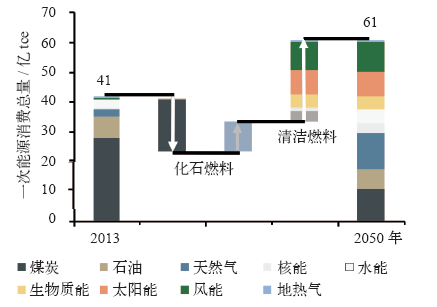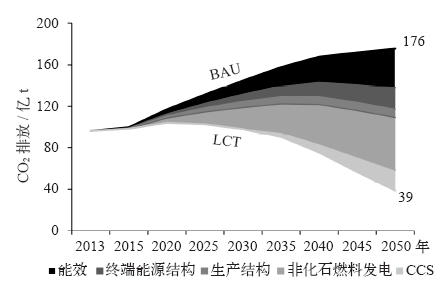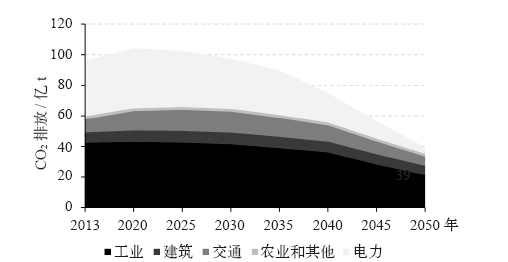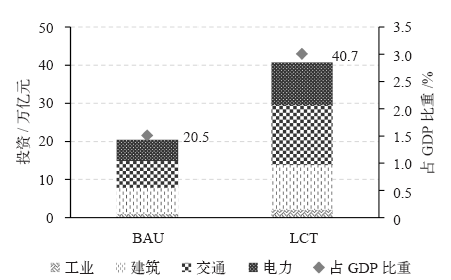| [1] | 邹骥, 王克, 杨宝路, 等. 中国城市温室气体排放清单 [M]. 北京: 中国环境出版社, 2013. |
| [1] | Zou J, Wang K, Yang B L, et al. Guidelines for the development of citi’s GHGs inventory in China [M]. Beijing: China Environmental Science Press, 2013 ( in Chinese) |
| [2] | 林伯强, 刘希颖. 中国城市化阶段的碳排放: 影响因素和减排策略[J]. 经济研究, 2010 ( 8):66-78. |
| [2] | Lin B Q, Liu X Y. China’s carbon dioxide emissions under the urbanization process: influence factors and abatement policies[J]. Economic Research Journal, 2010 ( 8):66-78 (in Chinese) |
| [3] | Yang Y, Zhao T, Wang Y, et al. Research on impacts of population-related factors on carbon emissions in Beijing from 1984 to 2012[J]. Environmental Impact Assessment Review, 2015,55:45-53. DOI: 10.1016/j.eiar.2015.06.007 |
| [4] | Fu C, Wang W, Tang J. Exploring the sensitivity of residential energy consumption in China: implications from a micro-demographic analysis[J]. Energy Research & Social Science, 2014,2:1-11. DOI: 10.1016/j.erss.2014.04.010 |
| [5] | Liddle B, Lung S. Age-structure, urbanization, and climate change in developed countrie-revisiting STIRPAT for disaggregated population and consumption-related environmental impacts[J]. Population and Environment, 2010,31:317-343. DOI: 10.1007/s11111-010-0101-5 |
| [6] | Joint Research Centre. GEM-E3 model documentation [EB/OL]. 2013 [ 2019- 03- 01]. http://publications.jrc.ec.europa.eu/repository/bitstream/JRC83177/jrc83177%20(3).pdf |
| [7] | Lee H, Oliveira M J. The OECD green model: an updated overview [EB/OL]. OECD Development Centre Working Papers, No. 97, Paris, OECD Publishing, 1994 [2019-03-01]. https://doi.org/10.1787/272425468524 |
| [8] | O’Neil B C, Dalton M, Fuchs R, et al. Global demographic trends and future carbon emissions[J]. Proceedings of the National Academy of Sciences, 2010,107(41):17521-17526. DOI: 10.1073/pnas.1004581107 |
| [9] | O’Neil B C, Ren X, Jiang L, et al. The effect of urbanization on energy use in India and China in the iPETS model[J]. Energy Economics, 2012,34:S339-S345. DOI: 10.1016/j.eneco.2012.04.004 |
| [10] | International Energy Agency. World energy model documentation [EB/OL]. 2018 [ 2019-03-01]. https://www.iea.org/media/weowebsite/energymodel/WEM2018.pdf |
| [11] | International Institute for Applied Systems Analysis. MESSAGE [EB/OL]. 2018 [2019-03-01]. http://www.iiasa.ac.at/web/home/research/modelsData/MESSAGE/MESSAGE.en.html |
| [12] | 马丁, 陈文颖. 基于中国TIMES模型的碳排放达峰路径[J]. 清华大学学报: 自然科学版, 2017,57(10):1070-1075. DOI: 10.16511/j.cnki.qhdxxb.2017.25.047. |
| [12] | Ma D, Chen W Y. China’s carbon emissions peak path: based on China TIMES model[J]. Journal of Tsinghua University: Science and Technology, 2017,57(10):1070-1075. DOI: 10.16511/j.cnki.qhdxxb.2017.25.047 (in Chinese) |
| [13] | 能源研究所. 中国2050年低碳发展之路: 能源需求暨碳排放情景分析 [M]. 北京: 科学出版社, 2009. |
| [13] | Energy Research Institute National Development and Reform Commission. China’s low carbon development pathways by 2050: scenario analysis of energy demand and carbon emissions [M]. Beijing: Science Press, 2009 ( in Chinese) |
| [14] | 刘嘉, 陈文颖, 刘德顺. 基于中国TIMES模型体系的低碳能源发展战略[J]. 清华大学学报: 自然科学版, 2011,51(4):525-529, 535. DOI: 10.16511/j.cnki.qhdxxb.2011.04.014. |
| [14] | Liu J, Chen W Y, Liu D S. China’s low carbon energy development strategy based on China TIMES model system[J]. Journal of Tsinghua University: Science and Technology, 2011,51(4):525-529, 535. DOI: 10.16511/j.cnki.qhdxxb.2011.04.014 (in Chinese) |
| [15] | 傅莎. 基于能源系统模型的中国低碳发展技术战略和政策选择研究[D]. 北京: 中国人民大学, 2012. |
| [15] | Fu S. Study on China’s low carbon development technology strategy and policy options based on an energy system model[D]. Beijing: Renmin University of China, 2012 ( in Chinese) |
| [16] | 刘嘉, 陈文颖, 刘德顺. 中国能源服务需求预测模型[J]. 清华大学学报: 自然科学版, 2010,50(3):481-484. DOI: 10.16511/j.cnki.qhdxxb.2010.03.027. |
| [16] | Liu J, Chen W Y, Liu D S. China energy service demand projection model[J]. Journal of Tsinghua University: Science and Technology, 2010,50(3):481-484. DOI: 10.16511/j.cnki.qhdxxb.2010.03.027 (in Chinese) |
| [17] | 落基山研究所, 能源研究所, 美国劳伦斯伯克利国家实验室. 重塑能源:中国: 面向2050年能源消费和生产革命路线图研究 [R/OL]. 2016 [ 2019-03-01]. https://www.rmi-china.com/index.php/news?catid=18. |
| [17] | Rocky Mountain Institute, Energy Research Institute National Development and Reform Commission, Lawrence Berkeley National Laboratory. Reinventing fire: China: a roadmap for China’s revolution in energy consumption and production to 2050 [R/OL]. 2016 [2019-03-01]. https://www.rmi-china.com/index.php/news?catid=18 (in Chinese) |
| [18] | Chen W, Yin X, Zhang H. Towards low carbon development in China: a comparison of national and global models[J]. Climatic Change, 2016,136(1):95-108. DOI: 10.1007/s10584-013-0937-7 |
| [19] | 国务院. 国务院关于调整城市规模划分标准的通知[EB/OL]. 2014 [2016-11-12]. http://www.gov.cn/zhengce/content/2014-11/20/content_9225.htm. |
| [19] | The State Council. Notice of the State Council on adjustment of city scale classification [EB/OL]. 2014 [2016-11- 12]. http://www.gov.cn/zhengce/content/2014-11/20/content_9225.htm(in Chinese) |
| [20] | 工信部. 2013年钢铁工业经济运行情况[EB/OL]. 2014 [2017-01-03]. http://www.miit.gov.cn/n1146312/n1146904/n1648356/n1648357/c3059095/content.html. |
| [20] | Ministry of Industry and Information Technology. Iron and steel industry economic performance in 2013 [EB/OL]. 2014 [ 2017-01-03]. http://www.miit.gov.cn/n1146312/n1146904/n1648356/n1648357/c3059095/content.html(in Chinese) |
| [21] | 史伟, 王冬. 2009到2050年中国水泥产量预测 [C]. 2009中国水泥技术年会暨第十一届全国水泥技术交流大会论文集. 北京: 中国硅酸盐学会科普工作委员会、建筑材料工业技术情报研究所, 2009: 9-26. |
| [21] | Shi W, Wang D. China’s cement production forecast from 2009 to 2050 [C]. 2009 Proceedings of China Cement Technology Annual Conference and the 11th National Cement Technology Exchange Conference. Beijing: The Chinese Ceramic Society Popular Science Work Committee, Institute of Building Materials Industry Technical Information, 2009: 9-26 (in Chinese) |
| [22] | 史伟, 崔源声, 武夷山. 中国水泥需求量预测研究[J]. 中国建材, 2011 ( 1):100-105. DOI: 10.16291/j.cnki.zgjc.2011.01.031. |
| [22] | Shi W, Cui Y S, Wu Y S. China’s cement demand forecasting research[J]. China Building Materials, 2011 ( 1):100-105. DOI: 10.16291/j.cnki.zgjc.2011.01.031 (in Chinese) |
| [23] | 中国质量认证中心. 中国电解铝生产企业温室气体排放核算方法与报告指南 [R/OL]. 2013 [ 2019-03-01]. http://203.187.160.133:9011/www.gov.cn/c3pr90ntc0td/gzdt/att/att/site1/20131104/001e3741a2cc13e13f2105.pdf. |
| [23] | China Quality Certification Center. Guideline for GHG inventory and report for China’s Aluminum company [R/OL]. 2013 [ 2019-03-01]. http://203.187.160.133:9011/www.gov.cn/c3pr90ntc0td/gzdt/att/att/site1/20131104/001e3741a2cc13e13f2105.pdf (in Chinese) |
| [24] | Heaps C G. Long-range Energy Alternatives Planning (LEAP) system [software version: 2017.0.5] Stockholm Environment Institute, 2017 [2019-03-07]. 2017.org (in Chinese) |
| [25] | 国家统计局. 中国统计年鉴2017 [M]. 北京: 中国统计出版社, 2017. |
| [25] | National Bureau of Statistics. China statistical yearbook 2017 [M]. Beijing: China Statistics Press, 2017 ( in Chinese) |
| [26] | 国务院. 国家新型城镇化规划(2014—2020年)[R/OL]. 2014 [ 2019-03-01]. http://www.gov.cn/gongbao/content/2014/content_2644805.htm. |
| [26] | The State Council. National new urbanization planning (2014-2020) [R/OL]. 2014 [ 2019-03-01]. http://www.gov.cn/gongbao/content/2014/content_2644805.htm(in Chinese) |
| [27] | 国务院.国务院关于进一步推进户籍制度改革的意见 [EB/OL]. 2014 [2016-12-15]. http://www.gov.cn/zhengce/content/2014-07/30/content_8944.htm. |
| [27] | The State Council. The State Council’s opinions on further promoting the reform of the household registration system [EB/OL]. 2014 [ 2016-12-15]. http://www.gov.cn/zhengce/content/2014-07/30/content_8944.htm(in Chinese) |
| [28] | 住房和城乡建设部. 中国城市建设统计年鉴2013 [M]. 北京: 中国统计出版社, 2014. |
| [28] | Housing and Urban-Rural Development. China urban construction statistical yearbook 2013 [M]. Beijing: China Statistics Press, 2014 ( in Chinese) |
| [29] | United Nations, Department of Conomic and Social Affairs, Population Division. World population prospects: the 2015 revision [R/OL]. 2015 [2019-03-01]. https://www.un.org/en/development/desa/publications/world-population-prospects-2015-revision.html |
| [30] | 国家发改委. 国家新型城镇化综合试点方案 [R/OL]. 2014 [ 2019-03-01]. http://203.187.160.133:9011/www.ndrc.gov.cn/c3pr90ntc0td/fzgggz/fzgh/zcfg/201502/W020150204333529885819.pdf. |
| [30] | National Development and Reform Commission. National comprehensive new urbanization pilot program [R/OL]. 2014 [ 2019-03-01]. http://203.187.160.133:9011/www.ndrc.gov.cn/c3pr90ntc0td/fzgggz/fzgh/zcfg/201502/W020150204333529885819.pdf(in Chinese) |
| [31] | 国家发改委 . 第二批国家新型城镇化综合试点工作方案要点 [R/OL]. 2015 [2019-03-01]. http://203.187.160.133:9011/www.ndrc.gov.cn/c3pr90ntc0td/fzgggz/fzgh/zcfg/201511/W020151127368146249324.pdf. |
| [31] | National Development and Reform Commission. The working points of the second batch of national new urbanization comprehensive pilot program [R/OL]. 2015 [2019-03-01]. http://203.187.160.133:9011/www.ndrc.gov.cn/c3pr90ntc0td/fzgggz/fzgh/zcfg/201511/W020151127368146249324.pdf(in Chinese) |
| [32] | 国家发改委. 第三批国家新型城镇化综合试点工作方案要点[R/OL]. 2016 [2019-03-01]. http://203.187.160.133:9011/www.ndrc.gov.cn/c3pr90ntc0td/fzgggz/fzgh/zcfg/201612/W020161207379342699898.pdf. |
| [32] | National Development and Reform Commission. The working points of the third batch of national new urbanization comprehensive pilot program [R/OL]. 2016 [2019-03-01]. http://203.187.160.133:9011/www.ndrc.gov.cn/c3pr90ntc0td/fzgggz/fzgh/zcfg/201612/W020161207379342699898.pdf (in Chinese) |
| [33] | 中国城市轨道交通协会. 城市轨道交通2015年度统计和分析报告[R/OL]. 2016 [2019-03-01]. http://www.camet.org.cn/index.php?m=content&c=index&a=show&catid=18&id=1048. |
| [33] | China Urban Rail Transit Association. Urban rail transit 2015 annual statistics and analysis report [R/OL]. 2016 [2019-03-01]. http://www.camet.org.cn/index.php?m=content&c=index&a=show&catid=18&id=1048 (in Chinese) |
| [34] | 国家发改委, 国家能源局. 电力发展“十三五”规划(2016—2020年) [R/OL]. 2016 [2019-03-01]. http://203.187.160.133:9011/www.ndrc.gov.cn/c3pr90ntc0td/fzgggz/fzgh/ghwb/gjjgh/201706/W020170605632835660561.pdf. |
| [34] | National Development and Reform Commission, National Energy Administration. “13th Five-Year Plan” for power development (2016-2020) [R/OL]. 2016 [2019-03-01]. http://203.187.160.133:9011/www.ndrc.gov.cn/c3pr90ntc0td/fzgggz/fzgh/ghwb/gjjgh/201706/W020170605632835660561.pdf (in Chinese) |
| [35] | 国务院. 能源发展战略行动计划(2014—2020年) [R/OL]. 2014 [2019-03-01]. http://www.gov.cn/xinwen/2014-11/19/content_2780748.htm. |
| [35] | The State Council. Energy development strategic action plan (2014-2020) [R/OL]. 2014 [2019-03-01]. http://www.gov.cn/xinwen/2014-11/19/content_2780748.htm (in Chinese) |
| [36] | 国务院. 中华人民共和国国民经济和社会发展第十三个五年规划纲要 [R/OL]. 2016 [2019-03-01]. http://www.gov.cn/xinwen/2016-03/17/content_5054992.htm. |
| [36] | The State Council. Outline of the Thirteenth Five-Year Plan for national economic and social development of the People’s Republic of China [R/OL]. 2016 [2019-03-01]. http://www.gov.cn/xinwen/2016-03/17/content_5054992.htm (in Chinese) |
| [37] | 国务院. 国务院关于印发“十三五”现代综合交通运输体系发展规划的通知 [R/OL]. 2017 [2019-03-01]. http://www.gov.cn/zhengce/content/2017-02/28/content_5171345.htm. |
| [37] | The State Council. Notice of the State Council on the “13th Five-Year Plan” for modern comprehensive transportation system [R/OL]. 2017 [2019-03-01]. http://www.gov.cn/zhengce/content/2017-02/28/content_5171345.htm (in Chinese) |
| [38] | 国家发改委. 国家应对气候变化规划(2014—2020年) [R/OL]. 2014 [2019-03-01]. http://zfxxgk.ndrc.gov.cn/web/iteminfo.jsp?id=298. |
| [38] | National Development and Reform Commission. National climate change plan (2014-2020) [R/OL]. 2014 [2019-03-01]. http://zfxxgk.ndrc.gov.cn/web/iteminfo.jsp?id=298 (in Chinese) |
| [39] | 清华大学建筑节能研究中心. 中国建筑节能年度发展研究报告2008—2016 [M]. 北京: 中国建筑工业出版社, 2008— 2017. |
| [39] | Building Energy Conservation Research Center, Tsinghua university. 2008-2016 annual report on China building energy efficiency [M]. Beijing: China Architacture & Building Press, 2008- 2016 (in Chinese) |
| [40] | 工信部. 工业绿色发展规划(2016—2020年) [R/OL]. 2016 [2019-03-01]. http://www.ndrc.gov.cn/fzgggz/fzgh/ghwb/gjjgh/201706/t20170621_851925.html. |
| [40] | Ministry of Industry and Information Technology. Industrial green development plan (2016-2020) [R/OL]. 2016 [2019-03-01]. http://www.ndrc.gov.cn/fzgggz/fzgh/ghwb/gjjgh/201706/t20170621_851925.html (in Chinese) |
| [41] | 工信部. 2015年钢铁行业运行情况和2016年展望 [EB/OL]. 2016 [2016-09-25]. http://www.miit.gov.cn/n1146312/n1146904/n1648356/n1648357/c4637348/content.html. |
| [41] | Ministry of Industry and Information Technology. 2015 steel industry operation and 2016 outlook [EB/OL]. 2016 [2016-09-25]. http://www.miit.gov.cn/n1146312/n1146904/n1648356/n1648357 /c4637348/content.html (in Chinese) |
| [42] | 工信部. 2015年建材工业经济运行情况 [EB/OL]. 2016 [2019-03-01]. http://www.miit.gov.cn/n1146312/n1146904/n1648356/n1648361/c4635522/content.html. |
| [42] | Ministry of Industry and Information Technology. Economic performance of building materials industry in 2015 [EB/OL]. 2016 [2019-03-01]. http://www.miit.gov.cn/n1146312/n1146904/n1648356/n1648361/c4635522/content.html (in Chinese) |
| [43] | 国家统计局. 中国能源统计年鉴2015 [M]. 北京: 中国统计出版社, 2016. |
| [43] | National Bureau of Statistics. China energy statistics yearbook 2015 [M]. Beijing: China Statistics Press, 2016 ( in Chinese) |
| [44] | 交通部. 中国交通运输统计年鉴2013 [M]. 北京: 人民交通出版社, 2014. Ministry of Communications. |
| [44] | China transport statistical yearbook 2013 [M]. Beijing: China Communications Publishing & Media Management Co., Ltd., 2014 ( in Chinese) |
| [45] | 中国汽车工业协会. 中国汽车工业发展年度报告(2017) [M]. 北京: 社会科学文献出版社, 2017. |
| [45] | China Association of Automobile Manufacturers. Annual report on the development of China automotive industry (2017) [M]. Beijing: Social Sciences Academic Press, 2017 ( in Chinese) |
| [46] | 中电联. 中国电力行业年度发展报告2012—2016 [M]. 北京: 中国市场出版社, 2012— 2016. |
| [46] | China Electricity Council. China power industry annual development report 2012-2016 [M]. Beijing: China Market Press, 2012- 2016 (in Chinese) |
| [47] | 中国标准化研究院. 中国用能产品能效状况白皮书(2013)[M]. 北京: 中国质检出版社, 中国标准出版社, 2013. China |
| [47] | National Institute of Standardization. White paper for the energy efficiency status of China energy-use products (2013) [M]. Beijing: China Quality and Standards Publishing & Media Co., Ltd., 2013 ( in Chinese) |
| [48] | 工信部. 乘用车M1、轻型车辆M2与轻型货车N1燃油经济性查询 [EB/OL]. 中国汽车燃油消耗量网站. 2016 [2019-03-01]. http://chinaafc.miit.gov.cn/n2250/index.html?searchId=clzlcx. |
| [48] | Ministry of Industry and Information Technology. Passenger car M1, light vehicle M2 and light truck N1 fuel economy inquiry [EB/OL]. 2016 [2019-03-01]. http://chinaafc.miit.gov.cn/n2250/index.html?searchId=clzlcx (in Chinese) |
| [49] | 王庆一. 2016 能源数据 [R/OL]. 2017 [2019-03-01]. http://203.187.160. 133:9011/new.igdp.cn/c3pr90ntc0td/wp-content/uploads/2019/ 03/2017-02-16-IGDP-Data-Manual-CN-2016-energy-Statistics.pdf. |
| [49] | Wang Q Y. 2016 energy statistics [R/OL]. 2017 [2019-03-01]. http://mtjj.sdibt.edu.cn/info/2001/2371.htm (in Chinese) |
| [50] | International Energy Agency (IEA). Energy technology perspectives 2015[M]. Paris: OECD, 2015 |
| [51] | International Energy Agency (IEA). Energy technology perspectives 2016[M]. Paris: OECD, 2016 |
| [52] | 国家发改委. 国家重点节能技术推广目录(1—6批)和第7批 [EB/OL]. 2014 [2019-03-01]. http://hzs.ndrc.gov.cn/newzwxx/201412/t20141217_652539.html. |
| [52] | National Development and Reform Commission. National key energy conservation technology promotion catalogue (1-6 batches) and 7th batch [EB/OL]. 2014 [2019-03-01]. http://hzs.ndrc.gov.cn/ Newzwxx/201412/t20141217_652539.html (in Chinese) |
| [53] | 京东. 家电 [EB/OL]. 2018 [ 2019-03-01]. https://www.jd.com/. |
| [53] | Jingdong.Home appliances [EB/OL]. 2018 [ 2019-03-01]. https://www.jd.com/ (in Chinese) |
| [54] | 天猫电器城. 家电 [EB/OL]. 2018 [ 2019-03-01]. https://3c.tmall.com/. |
| [54] | Tmall Electric City. Home appliances [EB/OL]. 2018 [ 2019-03-01]. https://3c.tmall.com/ (in Chinese) |
| [55] | International Energy Agency (IEA). World energy investment outlook[M]. Paris: OECD, 2014 |
| [56] | 世界银行. 世界银行发展指数数据库 [DB/OL]. 2016 [2019-03-01]. http://data.worldbank.org/. |
| [56] | World Bank. World development indicator [DB/OL]. 2016 [2019-03-01]. http://data.worldbank.org/ (in Chinese) |
| [57] | Central Intelligence Agency. The world factbook 2015 [EB/OL]. 2017 [2018-01-04]. https://www.cia.gov/library/publications/download/download-2015/index.html |
| [58] | 交通运输部. 交通运输部部长: 让人民群众有更多“获得感” [EB/OL]. 2016 [2018-01-04]. http://www.gov.cn/xinwen/2016-03/09/content_5051178.htm. |
| [58] | Ministry of Transport. Minister of transportation: let the people have more “sense of acquisition” [EB/OL]. 2016 [2018-01-04]. http://www.gov.cn/xinwen/ 2016-03/09/content_5051178.htm (in Chinese) |
| [59] | 陈蓓. 国外城市轨道交通发展规模研究[D]. 北京: 北京交通大学, 2010. |
| [59] | Chen P. Research on development scale of foreign urban rail transit[D]. Beijing: Beijing Jiaotong University, 2010 ( in Chinese) |
| [60] | 刘俊伶, 项启昕, 王克, 等. 中国建筑部门中长期低碳发展路径[J]. 资源科学, 2019,41(3):509-520. |
| [60] | Liu J L, Xiang Q X, Wang K, et al. Mid-to long-term low carbon development pathways of China’s building sector[J]. Resources Science, 2019,41(3):509-520 (in Chinese) |
| [61] | 刘俊伶. 中国中长期低碳发展战略目标与实现路径研究[D]. 北京: 中国人民大学, 2017. |
| [61] | Liu J L. Study on China’s med-to long term low carbon development strategy target and roadmap[D]. Beijing: Renmin University of China, 2017 ( in Chinese) |
| [62] | 刘俊伶, 孙一赫, 王克, 等. 中国交通部门中长期低碳发展路径研究[J]. 气候变化研究进展, 2018,14(5):513-521. |
| [62] | Liu J L, Sun Y H, Wang K, et al. Study on mid-and long-term low carbon development pathway for China’s transport sector[J]. Climate Change Research, 2018,14(5):513-521 (in Chinese) |
| [63] | 国家发展和改革委员会能源研究所课题组. 我国实现全球1.5℃目标下的能源排放情景研究 [R]. 自然资源保护协会, 2018. |
| [63] | Research Group of the Energy Research Institute of the National Development and Reform Commission. China coal consumption cap plan and policy research project [R]. Natural Resources Defense Council, 2018 ( in Chinese) |
| [64] | 刘嘉, 陈文颖, 刘德顺. 中国ESDPM模型及其在交通需求预测中的应用[J]. 中国人口?资源与环境, 2011,21(3):71-75. |
| [64] | Liu J, Chen W Y, Liu D S. China ESDPM model and its application in transport demand projection[J]. China Population, Resources and Environment, 2011,21(3):71-75 (in Chinese) |
| [65] | Japan Soda Industry Association. 2016, Trends in caustic soda supply and demand [EB/OL]. 2018 [2019-03-01]. http://www.jsia.gr.jp/english/statistics.html |
| [66] | International Conference on Information Systems (ICIS). Market outlook: speedy growth for chemicals by 2050 [EB/OL]. 2013 [2018- 01-04]. http://www.icis.com/resources/news/2013/10/13/9714353/market-outlook-speedy-growth-for-chemicals-by-2050/ |
 ),夏侯沁蕊3,刘芳名3,邹骥3,孔英2,4
),夏侯沁蕊3,刘芳名3,邹骥3,孔英2,4
 ),Qin-Rui XIAHOU3,Fang-Ming LIU3,Ji ZOU3,Ying KONG2,4
),Qin-Rui XIAHOU3,Fang-Ming LIU3,Ji ZOU3,Ying KONG2,4











